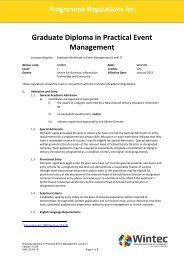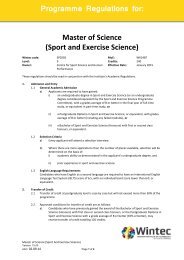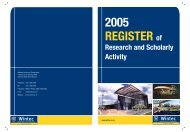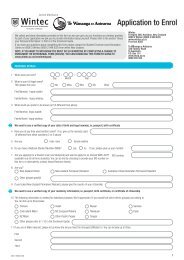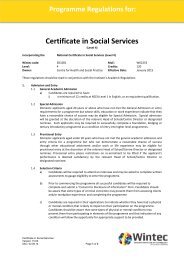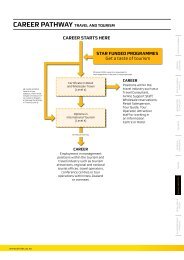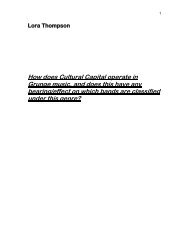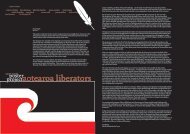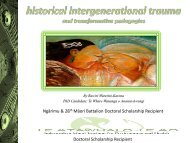Nursing Handover Research Project - Wintec Research Archive
Nursing Handover Research Project - Wintec Research Archive
Nursing Handover Research Project - Wintec Research Archive
You also want an ePaper? Increase the reach of your titles
YUMPU automatically turns print PDFs into web optimized ePapers that Google loves.
Sexton et al., 2004). There are also a variety of environments for handover delivery to take<br />
place, these being bedside, office or staff room (Kerr, 2002; O’Connell et al.). The nursing<br />
handover occurs between nurses at the change of shift. There are usually three shifts;<br />
morning, afternoon and night. The handover typically includes the handing over of patient<br />
care and therefore ‘duty of care’ and responsibility to the next shift. The information handed<br />
over can include patient name, age, diagnosis and then a variety of information pertaining to<br />
the patient and their care. Nurses use models that employ an acronym to enable systematic<br />
information to be transferred such as SOAPIE (Subjective, Objective, Assessment, Plan,<br />
Intervention, Evaluation) or ISOBAR (Identification of patient, Situation and status,<br />
Observations, Background and history, Assessment and Action, Responsibility and risk<br />
management) (ACSQHC, 2009) to guide their handover, or alternatively a systems approach<br />
for example body systems or head to toe (Wilson, 2007), but more often they use no tool at<br />
all. There is no standard method of delivery that all nurses recognise so therefore no<br />
commonality of practice.<br />
<strong>Handover</strong> can be described as a ritual as it is performed as if there are unwritten rules and<br />
regulations (Evans et al., 2008). <strong>Handover</strong> has evolved to the present day shape and each new<br />
nurse learns the patterns of behaviour that has gone before and so on. <strong>Handover</strong> involves<br />
power relationships where each nurse is socially positioned. Rituals appear to function as a<br />
form of social policing of each other and in turn reinforce the view of control and passivity<br />
(Cheek, 2000).<br />
My positioning/background<br />
“A good report is unhurried. It is well to set aside a block of time to be kept for report<br />
purposes. It should be an unbroken rule reports are not to be interrupted except in an<br />
emergency for if continuity is broken important points may easily be forgotten” (Barrett,<br />
1949, p. 173).<br />
From the historical to modern day, handover practice has seen little change and this extract<br />
could still be relevant today yet it was penned in 1949. Historically when I started nursing in<br />
the late 1980’s handover has remained comparable to current practice. I cannot recall being<br />
taught handover and with each of my nursing positions I have not been educated about<br />
handover when completing an orientation process within a new environment and role. Little<br />
change has infiltrated the act of nursing handover. It has become a “taken for granted<br />
4



